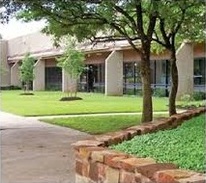 I have a dream for my neighborhood. It began to form in a time of defeat. About two years ago, I was dismissed from a small consulting firm. As a high school and college honors student who’d never had a bad work performance review before, I saw this as a horribly crushing failure. I didn’t take it lying down though. I got up and walked. I walked all over Braker Center, the light industrial/office park only blocks from my house. I began to wonder. What if I could find, or create opportunity with those businesses right here in my own backyard?
I have a dream for my neighborhood. It began to form in a time of defeat. About two years ago, I was dismissed from a small consulting firm. As a high school and college honors student who’d never had a bad work performance review before, I saw this as a horribly crushing failure. I didn’t take it lying down though. I got up and walked. I walked all over Braker Center, the light industrial/office park only blocks from my house. I began to wonder. What if I could find, or create opportunity with those businesses right here in my own backyard?
Since my walk through Braker Center in spring 2012, a vision and some possible avenues to take have begun to materialize. Over the past year, I’ve done a lot of green business and renewable energy networking. My growing knowledge of and friendships with people in these arenas has finally brought a vision into focus. Here’s what I see now.
The Vision
I see Braker Center as a green business park with a clean energy focus. Both the buildings and grounds are super “green” plus the tenants are “green,” or actively “greening” their organizations. The business park would involve both facilities and community aspects.
The buildings and grounds would be upgraded to address energy and water supply and efficiency. Solar panels, rainwater harvesting and xeriscaping would be a must. Revamping HVAC, lighting, insulation, electrical systems, water pipes and water fixtures/appliances would also be high priority. Yet, keeping in mind the 3 R’s, reduce-reuse-recycle, it would be wise to reuse, or leave intact as much of what’s already on-site as possible.
Forming a collaborating, interactive business community would be part and parcel of the transformation into a green business park. Building partnerships amongst tenants and property-management/owners from the start could be very helpful to address the logistics of changes to buildings, etc. Also, the park’s tenants and management would reach out and interact with the schools and neighborhood associations on the park’s borders. For starters, Harmony School of Science, N.Y.O.S., ACC North Ridge and the Gracy Woods Neighborhood Association are very close neighbors. To facilitate this outreach, an event/training space on-site would be a great asset for the neighborhood and those who visit to learn about the place.
The Possibilities
I’ve discovered some real possibilities for funding and collaboration through my networking. Funding could be in the forms of grants and/or private investment. CleanTX Foundation, a clean energy cluster development group based in Austin, knows about grant opportunities. Also, a new financing tool called PACE, (property-assessed clean energy) for commercial/industrial facility upgrades, is set to roll out soon here in Texas. There is also the possibility of finding new ownership for the property, if the current owners aren’t interested. I’ve encountered green-minded folks with Fortune 500 connections that may have an interest.
Further, collaboration between green-minded, energy industry tenants has already begun. Two current occupants of Braker Center, Circular Energy and Concurrent Design, are set to officially unveil a solar carport project next week (SEEN #17 event). Additionally, SunPower and CleanTX Foundation have an office presence in the area. These seeds of collaboration just need a little nurturing.
I see a dream that is a worthwhile challenge. I even have a working name for it, North Austin Green, which can be turned into an amusing acronym. Funding, property owners and numerous existing tenants of various stripes all present what could be call obstacles. However, I see the possibility of growth and transformation. I see a thriving, green business microcosm that creates dollars, health and happiness . . . and a model for the future.

 Austin has gained a reputation for leadership in energy and cleantech. Here’s my experience this month of Austin’s fantastic and growing energy industry through events I’ve had the privilege to attend, or will attend soon.
Austin has gained a reputation for leadership in energy and cleantech. Here’s my experience this month of Austin’s fantastic and growing energy industry through events I’ve had the privilege to attend, or will attend soon. Running a university campus is akin to operating a small city with its own utility. I already had some sense of this fact, but it was really driven home for me when I had a long conversation over coffee with someone who spent 30 years in Utilities and Energy Management on UT-Austin’s main campus. For a college campus, it’s all about energy and water use, and the drive toward maximum efficiency. Here’s a summary of what I learned in that coffee conversation.
Running a university campus is akin to operating a small city with its own utility. I already had some sense of this fact, but it was really driven home for me when I had a long conversation over coffee with someone who spent 30 years in Utilities and Energy Management on UT-Austin’s main campus. For a college campus, it’s all about energy and water use, and the drive toward maximum efficiency. Here’s a summary of what I learned in that coffee conversation. Last week
Last week
Recent Comments